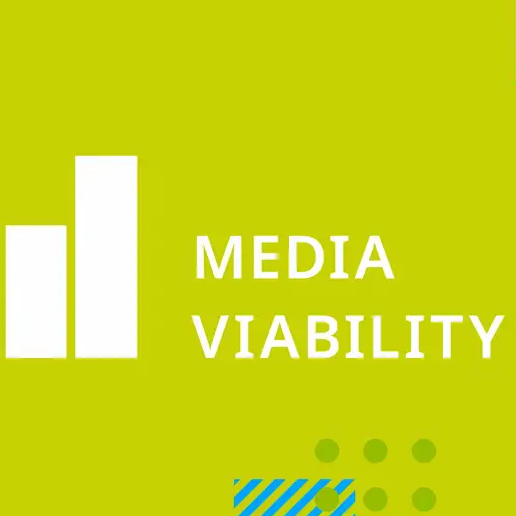Description
Access to information and media viability are foundational elements of a functioning democracy and a free society. They encompass the right of individuals to obtain, share, and disseminate information freely, as well as the sustainability and resilience of media organizations to perform their essential roles. Let’s delve into these concepts in greater detail.
Access to Information
Definition and Importance: Access to information refers to the ability of individuals and communities to seek, receive, and impart information and ideas of all kinds through any media, regardless of frontiers. This concept is enshrined in Article 19 of the Universal Declaration of Human Rights, which underscores the right to freedom of opinion and expression.
Key Components:
- Freedom of Speech and Expression: The right to speak freely, express opinions, and share information without censorship or restraint.
- Transparency and Accountability: Governments, institutions, and corporations must be transparent about their activities and decisions. This transparency ensures accountability and helps build trust with the public.
- Access to Public Records: Citizens should have the right to access government documents and proceedings to scrutinize actions and decisions effectively.
- Internet Accessibility: The Internet is a crucial medium for information dissemination in the modern age. Access to affordable and reliable internet ensures information reach and equity.
Challenges:
- Censorship and Restrictions: Many governments impose censorship and restrict access to information to control public opinion and suppress dissent.
- Digital Divide: Disparities in internet access and digital literacy can prevent significant portions of the population from accessing information.
- Misinformation and Disinformation: The spread of false or misleading information can undermine public trust and informed decision-making.
Media Viability
Definition and Importance: Media viability refers to the capacity of media organizations to operate sustainably and independently, ensuring the continuous provision of high-quality journalism. It involves financial health, operational stability, and editorial independence, which are critical for media to fulfill their role as watchdogs of democracy and informers of the public.
Key Components:
- Financial Sustainability: Media outlets need diverse revenue streams to avoid over-reliance on any single source, which could compromise their editorial independence. These streams might include advertising, subscriptions, grants, and alternative funding models.
- Operational Efficiency: Efficient management and resource allocation are essential for media organizations to thrive in a competitive and rapidly changing landscape.
- Editorial Independence: The ability to report stories without influence from advertisers, the government, or other powerful entities is crucial for maintaining public trust and credibility.
- Adaptation to Digital Transformation: Media organizations must embrace digital technologies and platforms to reach wider audiences and remain relevant.
Challenges:
- Economic Pressures: Declining advertising revenues, especially for traditional print media, have led to financial struggles and closures of many news outlets.
- Political and Corporate Interference: Efforts to influence media content through financial incentives or political pressure can undermine journalistic integrity.
- Competition from Digital Platforms: Social media and other digital platforms have changed the media consumption landscape, often diverting advertising revenue from traditional media.
- Audience Trust and Engagement: Media organizations must continually work to build and maintain trust with their audiences, which can be challenging in an era of widespread misinformation.
Interconnection Between Access to Information and Media Viability
The relationship between access to information and media viability is symbiotic. Access to reliable information depends on the existence of a viable media landscape, while an informed and engaged public sustains a thriving media sector.
- Public Empowerment: A well-informed public is better equipped to participate in democratic processes, hold leaders accountable, and advocate for their rights.
- Support for Independent Media: When the public recognizes the value of independent journalism, they are more likely to support media organizations through subscriptions, donations, and advocacy.
- Combatting Misinformation: A robust media landscape provides credible sources of information, helping to counteract the spread of false narratives and ensuring that citizens have access to accurate and verified news.
Strategies to Enhance Access to Information and Media Viability
- Policy and Regulation: Governments should enact and enforce policies that protect freedom of information, support press freedom, and ensure internet accessibility. This includes passing right-to-information laws and reducing regulatory burdens on media organizations.
- Financial Support: Philanthropic organizations, governments, and the private sector can provide funding and grants to support independent journalism and innovative media projects.
- Media Literacy Education: Promoting media literacy among the public helps individuals critically evaluate information sources and recognize credible journalism, reducing the impact of misinformation.
- Technology and Innovation: Investing in digital tools and platforms can help media organizations reach broader audiences and create new revenue streams.
- Collaboration and Networking: Media organizations can benefit from collaboration, whether through shared resources, joint investigative projects, or networks that support press freedom and journalist safety.
Conclusion
Access to information and media viability are cornerstones of a healthy, democratic society. They ensure that citizens can make informed decisions, participate actively in governance, and hold power to account. Addressing the challenges and leveraging opportunities in these areas requires a concerted effort from governments, civil society, media organizations, and the public. Through collaborative and innovative approaches, we can safeguard the right to information and the sustainability of media, thereby strengthening the foundations of our democracies.







Itoro –
As a media professional, I found this course to be incredibly practical and relevant to my work. The modules on funding models, digital transformation, and ethical considerations in journalism were eye-opening. The resources provided were extensive and will undoubtedly enhance my ability to navigate the rapidly evolving media landscape effectively.
Saminu –
The lectures were engaging and thought-provoking, offering a deep dive into the challenges and solutions surrounding media sustainability.
Nike –
It not only equipped me with the necessary skills to understand media viability but also instilled a deeper appreciation for the critical role of information access in today’s society. The discussions on media freedom and censorship were particularly enlightening and have broadened my perspective on global media challenges.
Saratu –
The instructors were knowledgeable and supportive, fostering an engaging learning environment. The emphasis on practical application through assignments and group discussions allowed me to apply theoretical knowledge to real-world scenarios. I now feel more confident in my understanding of media viability issues and their implications for democratic societies.
Kelechi –
I appreciated the thoughtful and well-structured curriculum of this course. Each module built upon the last, providing a comprehensive overview of the factors influencing media sustainability. The case studies and guest lectures were insightful, offering real-world examples that reinforced theoretical concepts.